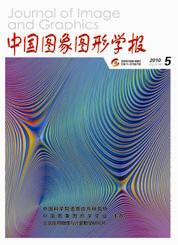
3维物体SIFT特征的提取与应用
摘 要
SIFT(scale-invariant feature transform)算法自提出以来,就因其优越的性能(尺度不变性、旋转不变性、抗噪声能力强、受光照变化影响小等),而备受图像图形领域研究者的青睐。该算法的核心特征(SIFT特征)基于局部梯度,能够抵抗图像大幅度的伸缩、旋转等,很好地满足了3维物体识别的实际需要。而SIFT特征对投影变换的相对敏感性恰可用于3维模型的视点空间划分,且划分依据与匹配依据一致,能够有效提高匹配准确度。合理设置SIFT算法的阈值还可以有效处理物体背景分割等技术问题。通过充分的预处理,能够有效降低SIFT算法计算复杂度高,使得系统基本达到实时匹配。总之,将SIFT特征应用在3维物体识别系统中的视点空间划分、背景物体分割、模式特征匹配等模块,可以有效地提高系统的识别速度与效率,增强系统的稳定性。
关键词
Extraction and Application of 3D Object SIFT Feature
XIONG Ying, MA Huimin(Institute of Image and Graphics, Department of Electronic Engineering, Tsinghua University, Beijing 100084) Abstract
The SIFT algorithm is widely adopted by researchers in image and graphic study, with its many advantages such as invariance to scaling, rotation, noise and illumination changes. SIFT feature is based on local gradient, making it invulnerable to large scale of image extension, compression and rotation, and this meets the practical requirements of 3D object recognition. And the sensitivity to homographic transformation of the feature can be applied to partition the view space. Reasonably setting the threshold value, SIFT algorithm can handle the technical problems such as cutting the object from its background. After pre-processing, the high computation complexity can be reduced, making the system run in real time. Therefore, applying SIFT feature in view space partition, cutting the object from its background and pattern matching can effectively enhance the robustness of the system and improve its speed and efficiency.
Keywords
|



 中国图象图形学报 │ 京ICP备05080539号-4 │ 本系统由
中国图象图形学报 │ 京ICP备05080539号-4 │ 本系统由